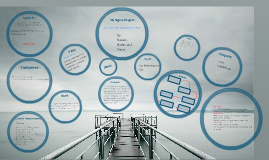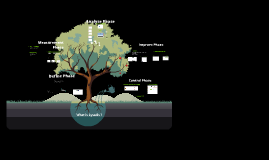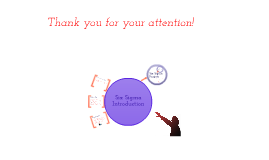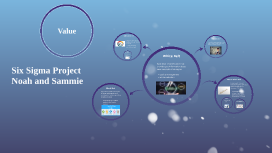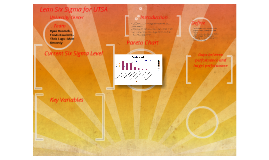Six Sigma Project
Transcript: Measurement System 5S Problem Statement 1) Don’t have a standardize way to program and train programmers so they are at the same level 2) No detailed and categorized documentation of bugs so they can properly learn from their mistakes A Connection to ATS B Desktop Page Layout Creation HTML/CSS C Mobile D Other E Browser Compatibility Why were we unable to meet the agreed-upon timeline and target minimum number of bugs per website? 1) It took more time 2) The programmer did a lot of bugs Problem Definition Analysis of Categorical Data DPMO Why didn't we do this? Six Sigma Project: Improving Websites Quality Accurate Repeatable Linear Reproducible Stable Reduce the number of bugs from an average of 12 per website with 2 reaching the client to 1 bug and zero reaching the client Improve Introduction Force Field Analysis Fishbone Diagram DOE Surface Plot 1) Because we were running behind on other projects. 2) We were understaffed 3) No delegation of authority to the operation manager to implement his idea 4) Micro management thus waste of time 5) Bugs: we didn’t have the proper system to categorize all types of bugs 6) Team is in different countries. Control A deviation between what should be happening and what actually is happening Bug Free Website (Focus of the Project) Higher Quality Design and Better Creative and Artistic Execution Conformance problem: unsatisfactory performance Collection of Data Process Control Plan Discrete data: number of bugs, hours worked Manual manipulation using Excel Sample was 33% of population spread over 6 months Judgment Sampling Different Types and Complexity Analyse 2 Bugs per project 0.014 bug per hour of development Critical-to-quality tree SMART: Specific, Measurable, Achievable, Relevant, Time Bounded "From September 2013 to February 2014 the number of bugs encountered was high at about 12 per website. Some were after the website was delivered. That created 5 complaints from different clients of which 2 were at the VP level. In turn, company's image was affected" Why is our client unhappy? Control Charts Designing potential errors out: Training Documentation of errors Identifying potential defects and stopping a process: Optimizely.com Finding defects that enter or leave a process Optimizely.com Cost of conformance: Waste of time to fix bugs and code errors It is happening at the late stages of the project execution. Hence, the cost (which is the time spent) is higher Managers spend valuable time in testing Cost of Poor Quality: 5 bugs reached the client Company's image and reputation in line SIPOC KPI Why the programmer did not code properly? Define Why did it take so much longer? why there were a lot of bugs 1) Complexity of the project 2) Miscommunication 3) programmer not writing code properly : one of the programmer is weaker than the other Control Charts Cost of quality Goal Statement Sort: Everything is well documented. clear. precise. Set in order: Put needed items in their correct place. Better Organized cloud to minimize waste of time and also to find the proper information Shine: No unnecessary files. Standardized cleanup: Optimize the system. Put archive folders. Use TAGging Sustain: Use procedure and proper documentation and follow ups monthly to keep everything in order. DOE - Factors: Developers - Level: Involvement Career Websites Good Design, Company's Image Functional, Practical, Ease of Use Process Map Measure 175,094 DPMO = 2.4 Sigma 0.17 Bugs / Hours New Target = 3.7 Sigma 1 per project or 0.014 Bugs / Hours Training of managers and employees (sending managers to seminars, managers then coach employees) Committing to less projects in order to focus on process improvement. Hence, more time will be available Regular meetings between management and employees to allow for brainstorming Encouraging employees to give feedback so that they are involved in the improvement process U Control Charts to monitor improvements A lot of programming bugs Project took more time then expected Poka-Yoke








